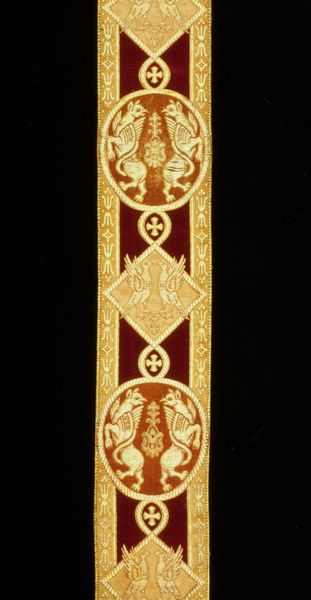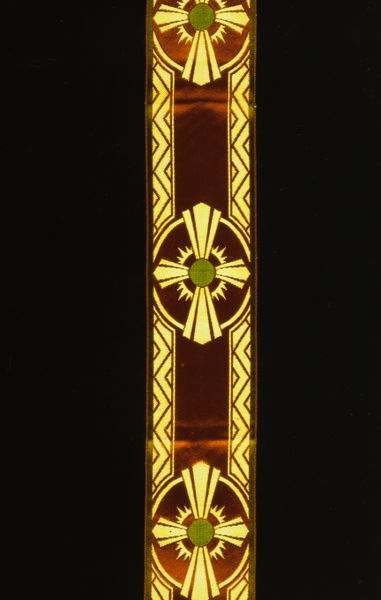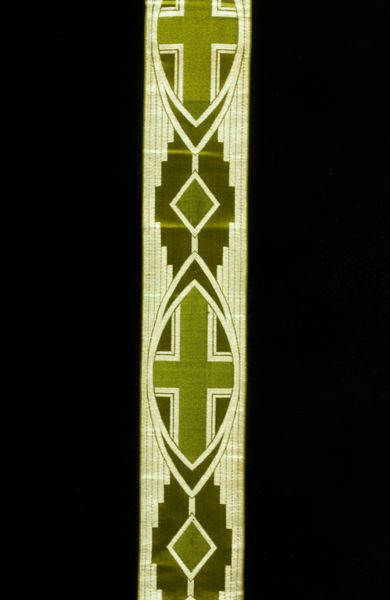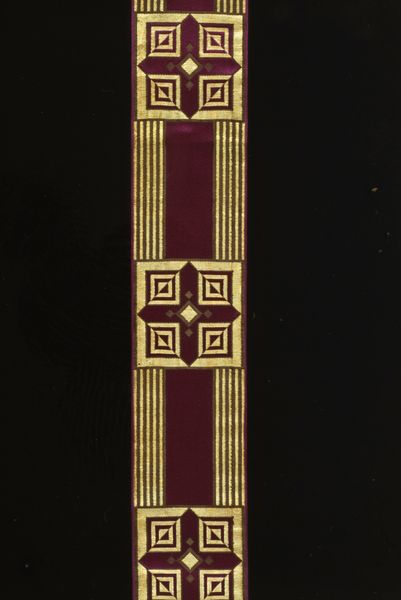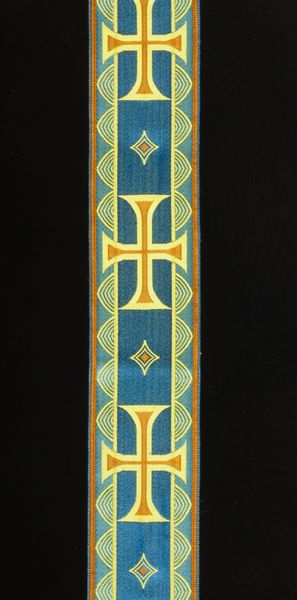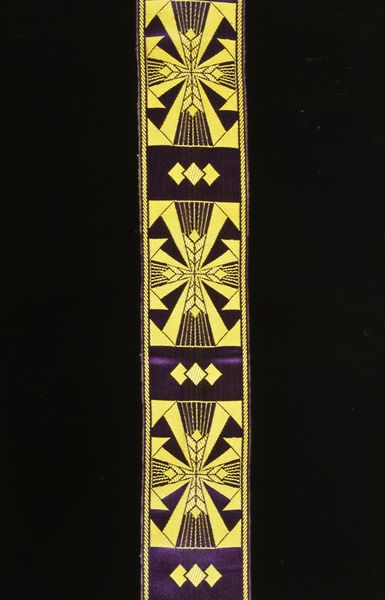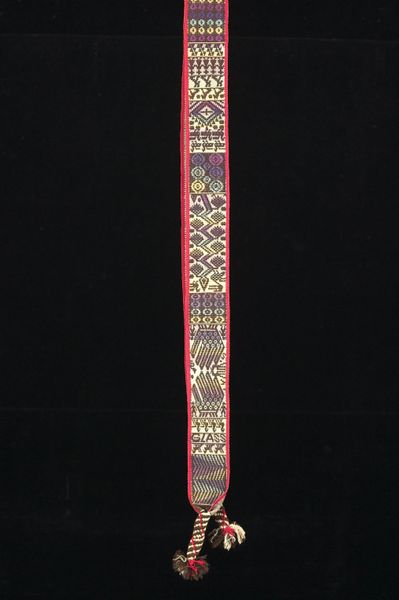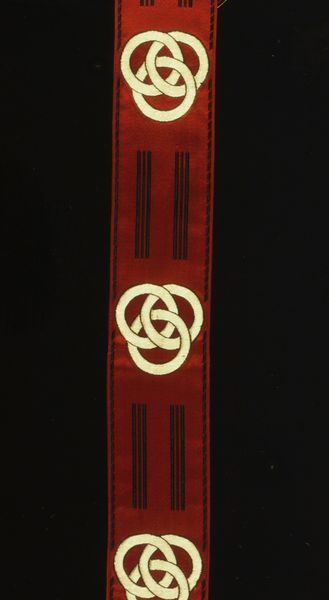
textile
#
natural stone pattern
#
random pattern
#
man-made pattern
#
textile
#
geometric pattern
#
abstract pattern
#
united-states
#
pattern repetition
#
layered pattern
#
funky pattern
#
combined pattern
#
repetitive pattern
Dimensions: 3 1/4 x 23 3/4 in. (8.26 x 60.33 cm)
Copyright: Public Domain
Curator: "Trim," a textile piece by the Sisters of the Order of St. Benedict, dating to the 20th century. What strikes you initially? Editor: Well, it's quite striking! The bold geometric designs in a sort of art deco style jump out against the dark background. I am wondering about the textile - the craft, the production - involved in this specific piece. It looks almost like it’s been designed with some sort of ecclesiastical context. Curator: Precisely. Notice how the process of creation – the weaving, the stitching, potentially even the dyeing of the materials – directly speaks to the community and values of the Benedictine sisters. This wasn't mass produced; the labor inherently embeds intention, function, and even meaning into the cloth. The repeated pattern, in this case with wheat and crosses, can be seen as both meditative labor and material symbolism for communal harvest and religion. How might their physical labor impact their spiritual practice, and vice versa? Editor: That’s a great point. So, it's not just the design but the act of creation that holds meaning. Do you think the materials themselves contribute to the meaning? Was that choice considered as carefully as the pattern was? Curator: Absolutely. The choice of fabric, the dyes used – all these choices represent accessibility and the social context from which it was born, speaking directly to consumption. This pushes back on notions of 'high' art versus 'craft,' because what's truly valuable is the skill and material significance. What are your closing thoughts, after looking at this? Editor: I see that what appeared, initially, as only appealing design has also strong symbolic value created through process. The labour invested is an inextricable component to the whole artistic statement! Curator: Yes, considering both process and production, along with historical and cultural context can reshape our perception.
Comments
No comments
Be the first to comment and join the conversation on the ultimate creative platform.
